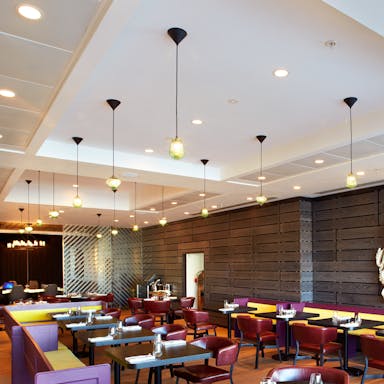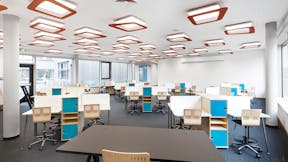The architect behind the project, Ralf Pohlmann, believes that school design should play "a pioneer role and show structures that are still present when the students then enter the professional life". Pohlmann believes the most crucial aspect of the school experience is to "optimize it, and above all, to think about the future... [ensuring that] students feel comfortable there."
Pohlmann took stimulation from his bad experiences at school and those of his two daughters to develop design plans that make the student feel at home at school, removing any possible element of fear or negative feeling. With negative feeling comes poor productivity and a lack of focus, so keeping morale in a school high is key to establishing a flourishing environment.
Gone are the days of the drab and plain classrooms of decades gone by, a school of the 21st Century. All classrooms are specially designed for the lessons they are seeking to teach. In Astrid-Lindgren School, there is a specialist central Music Hall, a workshop building, art classes and the future-proof design continues with WiFi throughout the buildings and school iPads.
A New School Day
The goal was to create a school where the children could feel safe and relaxed in a warm environment, to assist them in their capacity to learn and absorb information. Taking learnings from the Swiss school environment, the classroom set-up was rearranged so that, rather than individual desks, children work in small workgroups on a 'learning island' where they interact collaboratively. Two teachers also work in unison together, rather than a single teacher leading the lesson.
Since the shared 'learning island' environment means the classrooms can often be noisier, the kids are encouraged to talk and interact quietly with one another so they can be understood. So it was really important to the designers that the surroundings and room design mirror that.
After measuring diverse products, Pohlmann decided on Rockfon Tropic® ceiling tiles as the perfect solution, due to their high levels of sound absorption. In addition, he chose the x-edge for its smooth, clean finish, so that the ceiling would have a cohesive look and feel, with a seamless 'white blanket' appearance. Together with an integrated light solution the solution met the requirements of the school and classroom environment, while at an appropriate price point for a state-run programme and budget.
A school of the 21st Century must offer a space that enables the students to act freely and individually while learning in a positive and focused environment. The Astrid-Lindgren School, followed these guidelines closely with technical success, as well as greatly benefiting the community.




